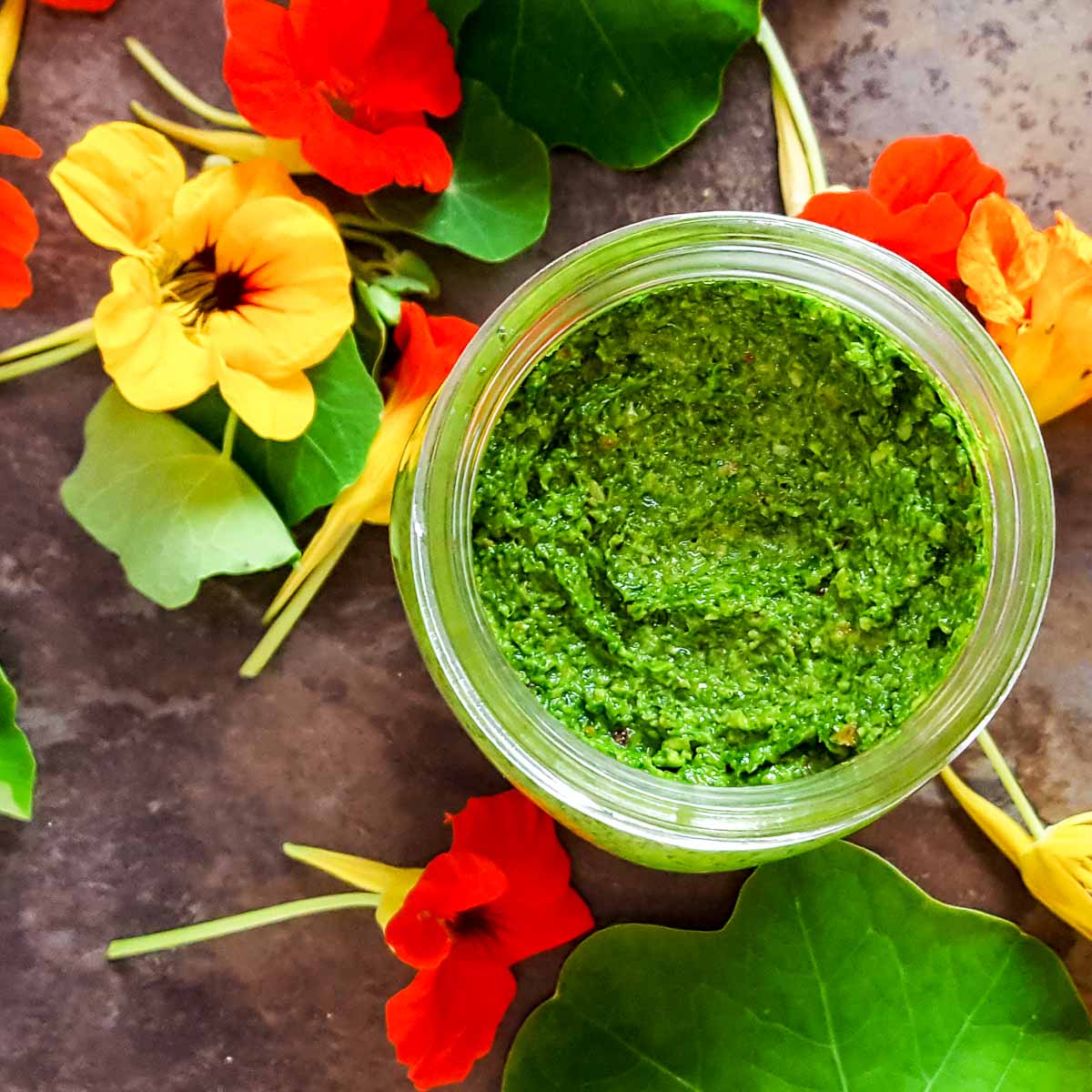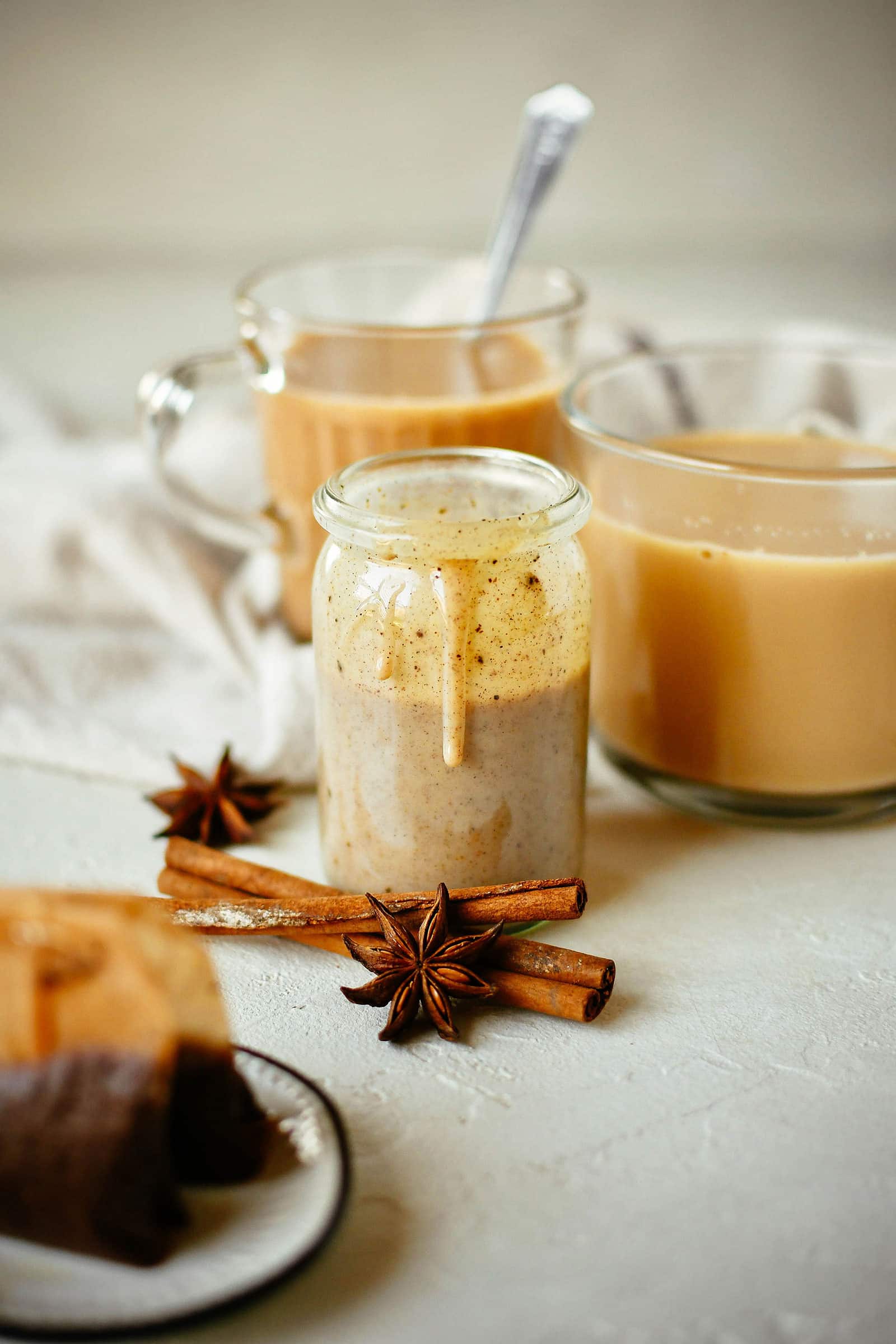Imagine transforming your meals with a sauce that’s not only vibrant and tasty but also packed with nutritional goodness. That’s the magic of nasturtium pesto, a delightful twist on the classic Italian condiment that’s sure to tantalize your taste buds.
From garden to table, the nasturtium plant offers a unique blend of spicy flavors and health benefits. Whether you’re a seasoned chef or just starting out in the kitchen, this guide will help you unlock the potential of nasturtium pesto in your culinary creations.
What Is Nasturtium Pesto?
Nasturtium pesto is a flavorful sauce made from the fresh leaves and flowers of the nasturtium plant. With its distinctive peppery taste, it serves as a perfect alternative to traditional basil pesto. Nasturtiums are not only an ornamental delight in gardens but also a powerhouse of nutrients, making them an excellent ingredient for a healthy and zesty pesto.
This unconventional pesto boasts a colorful appearance and a spicy kick that can elevate any dish. It’s a versatile addition to your culinary repertoire, complementing everything from simple pastas to elaborate gourmet dishes.
Nasturtium pesto is a testament to the plant’s edible versatility, as it incorporates both the leaves and the vibrant flowers. The spicy and slightly mustard-like flavor of nasturtiums sets this pesto apart from its basil-based cousin.
How Do You Make Nasturtium Pesto?
Making nasturtium pesto is a breeze, and it allows for plenty of creativity. Start by gathering fresh nasturtium leaves and flowers, ensuring they are clean and free from any pesticides. The basic ingredients for a nasturtium pesto include nasturtium leaves, garlic, nuts, Parmesan cheese, olive oil, and a touch of salt and pepper.
The process involves blending these ingredients until they form a smooth paste. However, feel free to experiment with different types of nuts or even add a squeeze of lemon juice for extra zing. The end result should be a thick, rich sauce bursting with flavor.
To personalize your pesto, consider adding extra herbs or spices that complement the peppery nasturtium. The beauty of this pesto lies in its adaptability, allowing you to tweak the recipe to suit your taste preferences.
What Are The Ingredients For Nasturtium Pesto?
The ingredients for nasturtium pesto are simple yet impactful. At its core, you’ll need:
- Fresh nasturtium leaves and flowers
- Garlic cloves for a pungent kick
- Your choice of nuts (such as pine nuts, walnuts, or almonds)
- Grated Parmesan cheese for a nutty, salty depth
- Good quality extra-virgin olive oil
- Salt and freshly ground black pepper to taste
These ingredients combine to create a pesto that’s not just flavorful but also full of texture and depth. Adjust the quantities to achieve the consistency and taste you desire.
What Makes Nasturtiums So Special?
Nasturtiums are not just another pretty face in the garden; they are edible plants rich in vitamin C, iron, and antioxidants. The presence of mustard oils gives them their characteristic spicy flavor, which can be enjoyed in both the leaves and the vibrant flowers.
These plants are easy to grow and can even help repel pests in your garden, making them a dual-purpose addition. Their trailing vines and bright blooms make them a visual delight, while their health benefits and culinary uses provide substance beyond their beauty.
How Do You Use Nasturtium Pesto?
Nasturtium pesto is not just for pasta – its uses are limited only by your imagination. Spread it on sandwiches for a peppery twist or dollop it onto grilled meats for an extra flavor punch. It can also serve as a unique salad dressing or a vibrant addition to soups and stews.
Consider using it as a marinade to imbue chicken or fish with its distinctive taste, or stir it into scrambled eggs or omelets for a breakfast that’s anything but ordinary. The versatility of nasturtium pesto makes it a valuable condiment to have on hand.
What Are The Variations Of Nasturtium Pesto?
Variations of nasturtium pesto abound, and you can easily adapt the recipe to cater to dietary preferences or ingredient availability. Some ideas include:
- Using different nuts such as cashews or pistachios for a change in flavor and texture
- Incorporating other herbs like cilantro or parsley to complement the nasturtiums
- Adding citrus zest or juice for a tangy note
- Substituting Parmesan with nutritional yeast to create a vegan version
These adjustments can help you create a custom pesto that reflects your unique tastes while still showcasing the signature nasturtium flavor.
How Do You Store And Freeze Nasturtium Pesto?
To preserve the fresh, spicy flavor of nasturtium pesto, proper storage is key. It can be kept in the refrigerator for up to a week when stored in an airtight container with a layer of olive oil on top to prevent oxidation.
For longer storage, freezing nasturtium pesto is an excellent option. Spoon the pesto into ice cube trays for convenient, portion-sized servings that can be thawed as needed. Once frozen, transfer the cubes to a freezer bag, and you’ll have a supply of fresh-tasting pesto ready whenever you crave that unique nasturtium zing.
Whether you’re enjoying it fresh or pulling it from the freezer, nasturtium pesto brings a burst of garden-fresh flavor to your table year-round.
Now, let’s enhance your understanding with a video demonstration of making nasturtium pesto:
Frequently Asked Questions About Nasturtium Pesto
Can You Make Pesto With Nasturtiums?
Yes, you can certainly make pesto with nasturtiums. The leaves and flowers provide a peppery flavor that’s perfect for a unique and tasty pesto variation. With the right balance of ingredients, you can create a delightful sauce that’s both delicious and nutritious.
Remember to pick the leaves and flowers gently to preserve their freshness until you’re ready to whip up your pesto. This garden gem is a fantastic alternative to traditional herbs, offering a burst of color and flavor to your culinary creations.
Is It Safe To Eat Nasturtium Leaves?
Absolutely, nasturtium leaves are safe to eat and are, in fact, a nutritious choice. They are rich in Vitamin C and have been used in herbal medicine for their antibacterial and healing properties. Ensure that the leaves are sourced from plants that have not been treated with pesticides or chemicals to enjoy their full health benefits.
These leaves can be eaten raw in salads, sandwiches, or as part of a pesto, providing a healthful and spicy touch to your diet.
What Are The Side Effects Of Nasturtium Leaves?
While nasturtium leaves are generally safe for consumption, some individuals may experience side effects if they have a sensitivity to the plant family or consume them in very large quantities. Potential side effects could include stomach upset or skin irritation.
Always introduce new edible plants into your diet gradually and in moderation. If you have any concerns, consult with a healthcare professional before consuming nasturtium leaves, especially if you have a known allergy to other plants in the Brassicaceae family.
What Should I Not Plant Nasturtium Next To?
When planting nasturtiums in your garden, it’s important to consider companion planting. Nasturtiums should not be planted next to cabbage, cauliflower, or other brassicas as they can compete for nutrients and potentially attract pests that affect these vegetables.
However, nasturtiums are great companions for tomatoes, cucumbers, and radishes. They can help deter pests and even improve the growth and flavor of these plants.
Nasturtium pesto offers a world of possibilities, from its simple, fresh ingredients to its numerous applications in the kitchen. Whether you’re serving it with pasta or spreading it on a sandwich, this peppery condiment is sure to impress with its bold flavor and health benefits. Embrace the versatility and vibrancy of nasturtiums, and let your culinary creativity bloom.






